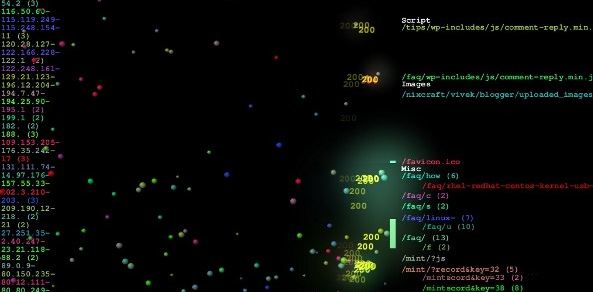Recently I came across an interesting Linux utility named “Logstalgia”, which is also known as Apache Pong. Logstalgia is a website traffic visualization program that displays web server access log as pongs. The pongs or colored balls that travel across the screen to arrive at the requested location. The successful requests are hit by the paddle, and 404 not found errors (unsuccessful requests) are missed and pass through. The tool has some interesting animations and can give you a visual access log in real time.
Logstalgia requires a web server access log as an input and a machine with a video card supporting OpenGL library. If you are using Debian or Ubuntu Linux, then the program can be installed using apt-get package. If you are using other linux environments, then you can compile the program from source.
Binary Installation
$ sudo apt-get install logstalgiaSource installation,
$ sudo apt-get install libsdl1.2-dev libsdl-image1.2-dev libpcre3-dev libftgl-dev libpng12-dev libjpeg62-devDownload source and build,
wget https://logstalgia.googlecode.com/files/logstalgia-1.0.3.tar.gzUnzip the package,
tar xvf logstalgia-1.0.3.tar.gzConfigure, make and make install,
$ ./configure
make
make installHow to use Logstalgia?
logstalgia access_log
logstalgia /var/log/httpd/access_log
logstalgia [options] /var/log/httpd/access_log
You can also save the monitoring output as video.
$ logstalgia -1280x720 --output-ppm-stream video.ppm /var/log/httpd/access_logConvert .ppm format to .mp4 format to view it using mplayer,
$ ffmpeg -y -r 60 -f image2pipe -vcodec ppm -i video.ppm -vcodec libx264 -preset ultrafast -pix_fmt yuv420p -crf 1 -threads 0 -bf 0 webserver_access_log.mp4View it using mplayer,
$ mplayer webserver_access_log.mp4
